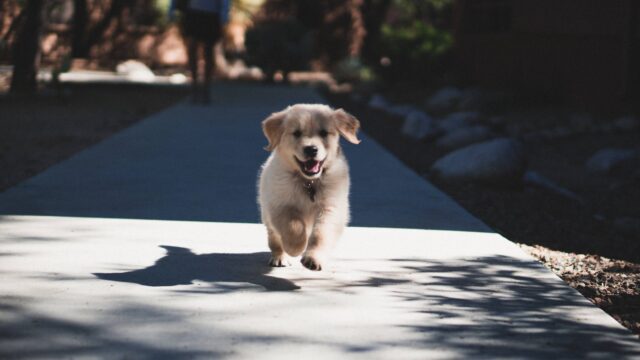You did it. After weeks searching for the perfect match, you finally got a puppy.
Now you’re here because you want to make sure you raise your new dog the right way. Well, you’ve come to the right place. We know a thing or two about puppy training.
So, we’ve compiled three of the most important things you need to know about getting a puppy to help you and your new furry friend get off on the right paw.
Puppies are hard work. Do your research and be prepared.
During all the excitement of getting a new dog, it can be easy to forget how much effort a puppy really takes.
The truth is, raising a puppy properly is a lot of hard work and it requires a big investment of your time. Your puppy’s adorable now, but they’re going to grow up (fast) and change a lot as they mature. It’s important that you’re prepared to handle that responsibility.
Anything less than a full commitment on your part won’t be enough. The silver lining? That commitment is well worth your time.
Start your preparation with research. Take the time to understand your puppy’s breed and genetics. What is that breed’s purpose? What are its drives and its predisposed behaviors?
Once you have the answers to questions like these, you’ll know how to communicate with your dog better and how to satisfy their needs as they get older.
Then, learn about establishing structure in your puppy’s life. Every dog craves structure and thrives off it. So, with a puppy, it’s crucial to implement it from Day 1, almost as soon as you’ve brought them home.
Why? Because the first 16 weeks of your puppy’s life, known as the imprinting period, is a critical time. This is when your dog is most receptive to learning. It’s the best opportunity you’ll have to shape good behavior and prevent behaviors that could become a problem later in life.
If you accept the responsibility that comes with raising a new puppy and embrace the challenge, you’ll already be well on your way.
You have to build a strong relationship with your puppy.
A healthy relationship with your dog is like any great friendship: you have to put in the time for it to flourish.
When you decide to get a puppy, you’re committing to do whatever it takes to give them the best life possible. That means spending quality time with your puppy so you can understand each other and develop a meaningful bond.
It also means that you can’t offload your relationship with your puppy onto something or someone else, like a dog walker or a dog sitter. It doesn’t matter if you work long hours, made other commitments or have a busy social life—spending time with your puppy is a must.
This is because building engagement is a crucial part of structure, training and nipping bad behavior in the bud. You always have to be the most important person in your dog’s world, no matter the environment.
At Koru K9, we strongly recommend the “No Free Lunch” policy—your dog should always have to do something for you to get something in return, including any food, play time or comfort. You teach them that all good things come from you and that they have to work for every reward they get.
If you’re not around or making the effort to form a strong relationship, building the engagement that the “No Free Lunch” policy requires will be next to impossible.
Your dog will be less likely to focus you and more likely to seek attention elsewhere. That external focus is where unwanted behaviors, like leash reactivity, can begin to develop.
Every interaction with your puppy is a training opportunity.
Your puppy is constantly learning from you and from their surroundings, so every minute of every day is an opportunity for you to train.
Whether it’s feeding time, play time or walk time, it’s a chance to build engagement and use the “No Free Lunch” policy to train your puppy.
For example, with the “No Free Lunch” policy, you can easily teach your puppy how to sit:
1. Use a treat to get your dog to sit.
2. As soon as they’re sitting, mark the achievement with a “Yes!”
3. Reward them with the treat.
4. Repeat the process.
You’re building engagement and teaching them that they’ve got to do something to get something. With enough practice, your puppy will start to offer that behavior on their own and sit for everything.
The best thing about utilizing every interaction with your puppy as a chance to teach or reinforce behavior is that training doesn’t need to be hours of strenuous work every day.
Instead, training can be 10 mini sessions throughout the day—when you’re walking them, feeding them or even watching TV with them—that only take 5–10 minutes.
And remember: whenever you’re training with your puppy, make sure you approach every session with high energy and excitement. When you’re engaged and having fun, your puppy will be engaged and having fun.

